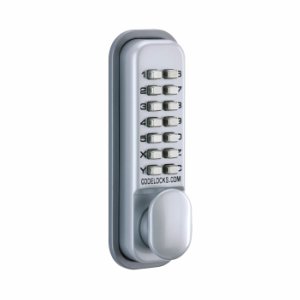What Are The Different Types Of Access Control Systems?
Security is a major consideration for any commercial business and there are many different types of system to suit organisations of varying size and nature. It is possible to find a security solution that suits the people and operations of your business and safeguards the people, assets and buildings at all times. The obvious weak point in any security system is the access point, and hence there are various access control systems which are designed to offer different levels of protection, but also provide different methods of gaining access, which can be chosen to suit the practicalities of how and when people need to access the site.
What is access control?
Access control can be a digital or a physical system. So it can be used to manage who has access to computer networks and data, but in this case, access control is a management system which determines who has physical access to a site and authenticates users by checking and verifying their credentials.
So whatever access control system you opt for, and whatever level of sophistication it has, you are essentially wanting it to do two things:
- Assign users with appropriate permissions
- Enable authenticated users to gain access to areas appropriate to their authentication status
The best access control systems no longer use physical keys and allow for easy access which is securely managed. In many cases there is no additional personnel required and systems can effectively operate on a 24/7 basis unmanned. More sophisticated access control solutions can be integrated with other systems such as alarms, CCTV and human resources/attendance systems and are also adaptable to use for health and safety and general management purposes, ie. who is on site and where are they at any particular time.
The most common types of access control systems
Access control systems are typically categorised as three different types; discretionary, mandatory or role-based. The system you choose will need to be suitable for how many people are accessing at the same time, how often people are wanting to gain access, how many internal areas need to be controlled in addition to the external access point, the hours of operation, how many people are on-site at any one time and what other security measures you have in place.
The most common types of access control systems are:
- Keys – A physical key is obviously a traditional method of entry but has been superseded by more advanced and sophisticated systems. Keys can get lost or damaged or replicated, and it is harder to control who physically has a key and therefore the appropriate authentication. The physical interaction of a key with a mechanical lock also means the lock can become damaged over time.
- Keypads – This can be a mechanical or digital type of keypad, which only differs in how the locking mechanism is activated, ie. either by a mechanical process or a digital signal. A user would input a PIN or passcode to gain access, which can be periodically changed to improve security because it is quite hard to restrict and manage who has knowledge of the entry requirements.
- Audio/video entry – A system where a user speaks to someone who is monitoring the access point in order to be given access, or appears on a video screen to be verified internally. This requires someone to be employed to manually monitor the access point and determine authentication and also requires a system to be devised which enables credentials to be checked and verified.
- Biometrics – Users gain access through displaying a unique biometric feature, such as a fingerprint scan, retina scanner or facial recognition. This is perhaps the most secure system as the access requirements can’t be lost or copied.
- Smart systems – These type of systems are controlled using a smartphone app and usually mean a user can gain access simply by walking within a certain distance of a scanner, at which point Bluetooth and NFC technology will read a signal from the user’s smartphone and grant access. This is a very user-friendly system, but is open to smartphones being lost or stolen and while remote access using this system is possible and very useful, this can also lead to unauthorised security breaches.
- Swipe cards – This is where a user has a swipecard or an ID badge or key fob, which carries radio frequency technology and sends a signal to a receiver at the access point when held in proximity to a sensor. This is a very common system and is quite robust in that it enables fast and easy access and can’t be copied, plus there is no need for a user to remember a code or number, but cards/badges/fobs can be lost.
- Barcode readers – A user carries a card with a barcode printed on it and which is scanned by a reader at the access point to enable authentication and access.
Let MB Direct help you choose the right type of access control system
If you need support with choosing the right type of access control system for your business, then contact MB Direct today. We can advise on the best systems to suit the size and nature of your business, the security risks present and the practical obstacles you encounter, so get in touch today.